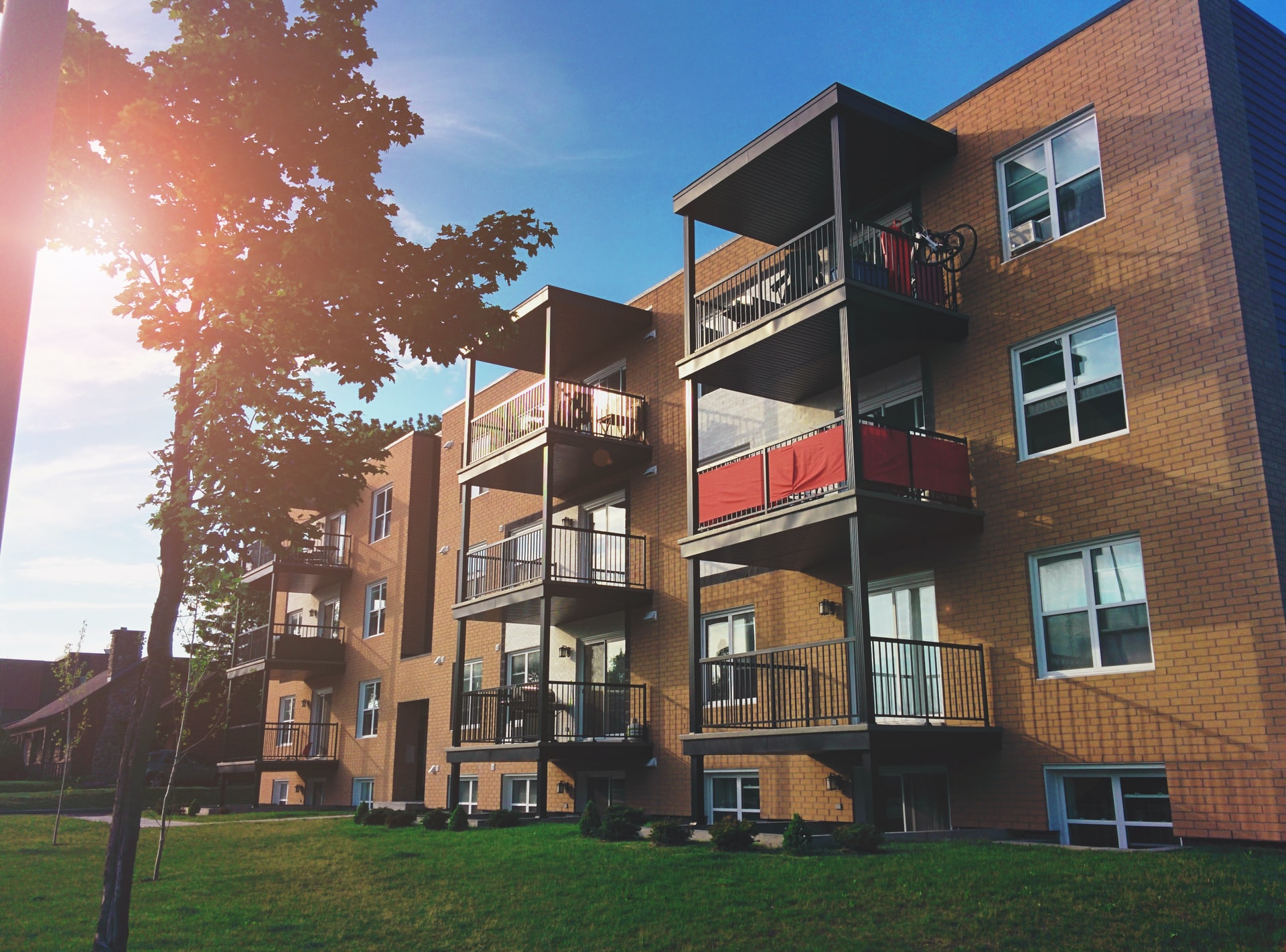Multifamily properties can provide consistent cash flow as tenants make monthly rent payments. Every real estate property requires management, but multifamily investments consolidate management’s efforts. Instead of having units scattered across several locations, multifamily units are in a central place. The scalability, cash flow, and leverage of multifamily investing have attracted many investors. We’ll share how to tap into multifamily investing on any budget.
How Does Investing In Multifamily Properties Work?
Multifamily property investors look for assets with several units. Any property from a duplex to an apartment complex qualifies as a multifamily property. You can accommodate multiple tenants within the same property. After raising enough funds for a down payment, you continue making monthly mortgage payments. Investors can make back the money by filling up units or fixing and flipping the property at a higher price. Some investors use both strategies to generate profits from multifamily properties.
Is Investing In Multifamily Properties Right For You?
Multifamily properties have many advantages over single-family properties. These properties can accommodate many tenants in a single location, increasing your cash flow while minimizing property maintenance costs. The primary downside to multifamily properties is the barrier to entry for new investors. As a result, multifamily properties don’t get listed as often as single-family homes: the reduced supply and higher cash flow potential results in higher prices.
Some multifamily properties cost millions of dollars. Investors with limited funds can’t afford the down payment. Some investors who can afford the multifamily property may have to use an “all eggs in one basket” approach. Any investment becomes a high risk if it takes up more than half of your portfolio. Some real estate investors put everything they have into a single multifamily property. Investors should consider portfolio concentrations and available funds before pursuing multifamily properties. You can get started with a duplex or triplex, which costs significantly less than apartment complexes.
Are Multifamily Properties a Safe Investment?
Any asset comes with risk. Stocks can decline, and real estate investing can lead to vacant units. Investors buy assets they believe will rise in value and outperform the risk-free rate of return. Some investments are less risky than others, and the right multifamily property can mitigate risk.
Screening tenants and filling up units generate consistent monthly income. You can review incoming proceeds to calculate your monthly budget. Investors will spend extra money on incidentals, but you can plan for those expenses in your budget. After many years of paying down the mortgage, you will eventually have full equity. Without a mortgage payment, your cash flow will increase substantially. Landlords can raise rents each year to raise profits and benefit from appreciation.
Multifamily investments have a reasonable risk-reward ratio, especially if you don’t take an all-or-nothing approach with a single property. You should diversify funds across your investment portfolio to mitigate risk.
Multifamily Property Investment Options
Real estate investors have several choices to gain exposure in multifamily properties. Some of them require extensive capital, while others only require spare change.
Rental Properties
Many multifamily investors buy these properties for cash flow. You get several units located in the same place, making marketing and management easier. Tenant screenings minimize the risk of squatting or property damage. Rental properties require consistent work, but you can delegate the responsibilities to a property manager.
Rental properties reward long-term investors. You can raise the rent each year, benefit from appreciation, and eventually pay off the mortgage. Rental properties can cultivate generational wealth as the next generation collects cash flow without worrying about mortgage payments.
Flipping Houses
Not every investor wants to deal with tenants. While you can generate consistent cash flow from tenants, some can damage the property and lead to many headaches. These investors still understand the opportunity in multifamily property investing and resort to flipping instead.
Multifamily property flippers find worn-down properties that need some help. Investors will buy the property, fix it up, and flip it for a profit. These investors look at selling prices of similar multifamily homes in the area or similar locations. The difference between the current asking price and the future selling price represents your margin of safety.
Let’s assume an investor buys a property for $1 million. The property needs some repairs and can sell for $1.7 million after it’s modernized. You can spend up to $700,000 on renovations until the property becomes a net loss. Investors will assess the property and calculate their expenses before buying the property.
In our example, spending $700,000 on repairs helps you break even, but no flipper wants to stop the gains at breakeven. Fixing a property requires months of hard labor, finding specialists to perform tasks you don’t know how to do, and forgoing other properties. You’ll also have to find a buyer after enhancing the property. Only pending $300,000 on the property results in a $400,000 profit. Flippers establish their minimum profit margin and only accept projects with their defined profit margin. They may walk away from several properties before finding one at a suitable price that provides a significant margin of safety.
Real Estate Investment Trusts
Why buy properties when another company can do it for you? Real estate investment trusts (REITs) are one way to invest in multifamily properties without raising capital and managing tenants. Most REITs trade on the stock market, giving you full liquidity. You can buy a REIT today and sell it in a few minutes. Multifamily properties don’t have that level of liquidity.
REITs also delegate research, maintenance, networking, and other obligations. These companies must pay dividends to shareholders, and most of them give out quarterly dividends. You can also benefit from stock price appreciation, but you can also lose money on stock price movements. REITs do not give shareholders the same tax advantages as owning real estate, but they require less work.
If you invest in REITs, research their valuations. Yahoo! Finance shows each REIT’s valuation metrics and the past few years of revenue and earnings growth. You can also use NASDAQ’s site to see dividend growth history. Look for a REIT that raises its dividend each year. Dividend hikes are a sign of a successful business generating more profits. A large gap between dividends per share and funds from operations per share (favoring FFO per share) indicates the company has more room to raise dividends in the future.
Real Estate Mutual Funds
Each REIT provides diversification. These investment trusts hold onto several properties. Real estate mutual funds have a basket of REITs and properties. A single fund can provide enough diversification to cover every type of real estate property. Funds give you exposure to multifamily, commercial, industrial, and other real estate types. You can buy fractional shares and easily invest in these funds each week.
Real Estate Equity Firms
Real estate equity firms raise capital from investors to buy properties. These firms maximize returns for investors by acquiring real estate, getting tenants, maintaining properties, improving them, and selling at a higher price.
How To Start Investing in Multifamily Properties
Multifamily properties generate cash flow and can appreciate. Raising rent each year expands your cash flow. Some investors like multifamily investing, but they don’t have enough funds to acquire properties.







